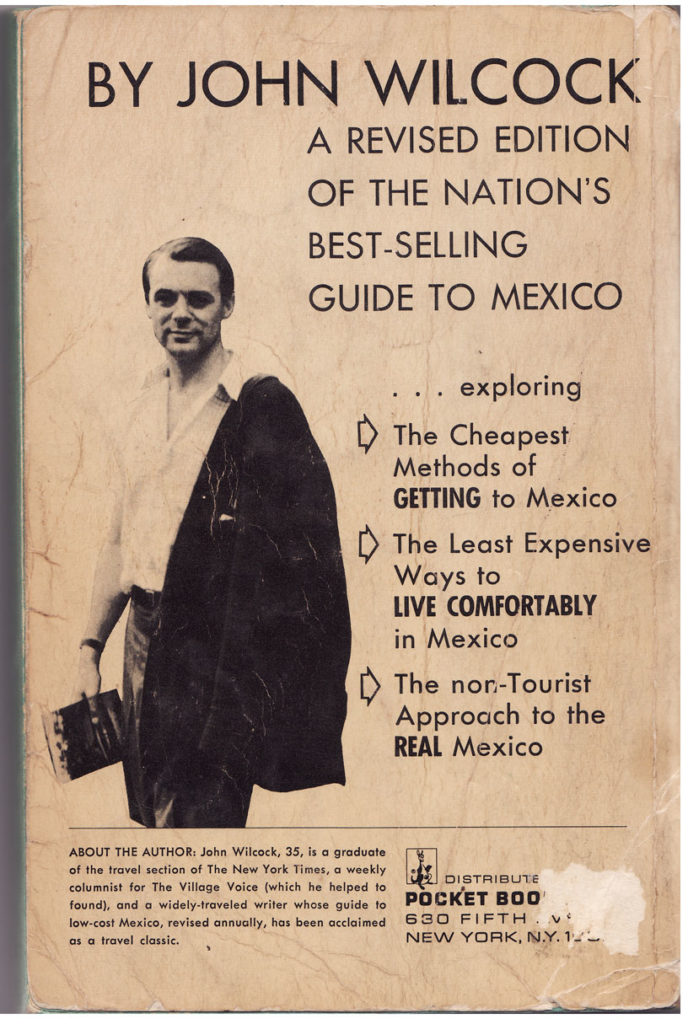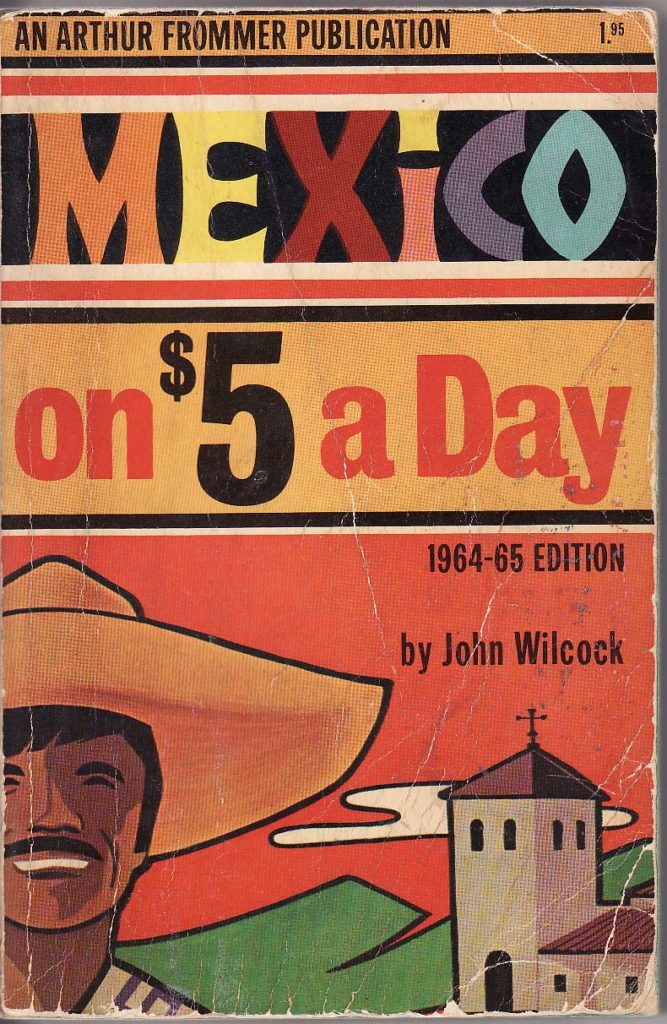
In the early 1960’s, John Wilcock spent months traveling across Mexico on the cheap, sleeping in hammocks on beaches and busing from one far-flung side of the country to the other, researching what would become a classic of south of the border travel. Writing for Arthur Frommer, who helped create modern tourism by encouraging people to venture out on their own without tours, Wilcock created an extremely detailed, invaluable guide that led intrepid travelers across Mexico for decades. In the 1964-65 edition, Zihuatanejo ranked large enough only for a mention as a side trip from Acapulco, and now 50 plus years later, we are still charmed to revisit the impressions of a much smaller, much simpler Zihuatanejo. – (Editor)
Excerpt from, Mexico on $5 a Day An Arthur Frommer Publication 1964-65 Edition, By John Wilcock Side trip to Zihuatanejo It’s likely that for many years to come, one tiny fishing village after another along the Pacific coast will be “discovered” by advance guards of tourists, each gradually becoming more popular, eventually to adopt all the trappings of the typical up-to-date resort. At present, Zihuatanejo (pop: 1,380), a town where the electricity shuts off before midnight, seems quite content with its fishing, coconut harvesting and the handful of tourists who fly in or make the lengthy, exhausting bus ride from Acapulco, about 140 miles to the south.Work has been proceeding on the road to Zihuatanejo for some time now, and it is paved for all but the last 30 miles of its length. This part gets very muddy after especially heavy rains, but the buses almost always get through. The trip itself is an interesting one through semi-tropical scenery, with occasional glimpses of the coast and three or four small villages, the largest of which—Petatlan— has an interesting modernistic church and an excellent view from the bridge, where you can stand and watch the women of the town do their daily washing under makeshift “huts” erected in the river.Zihuatanejo itself is absolutely beautiful. The beach curves around a small, natural bay in which fishing boats and an occasional sailboat bob at anchor, and in the small town behind, you’ll still see more people riding about on burros than in automobiles. The town is utterly uncommercialized, with nothing to do but walk, lie in the sun and read, or go to the town’s outdoor movie theatre (films projected on a bare wall inside what appears to be an abandoned church), where a film is presented about two or three times a week. The town’s electric system shuts off at 11p.m. each night.There are boats to rent and it’s also possible to go hunting but predators of this sort don’t need any help from me.WHERE TO STAY: There’s an expensive hotel, the Zafari, just as you reach town—ten minutes’ walk from the center—and two others the Irma and the Catalina, on a rocky headland around the bay to the south. The latter two can be reached only by car along a rugged road, and have only American-plan rates (Catalina: 180 pesos double, 100 pesos single; Irma, 10 and 20 pesos cheaper), so both can pretty well be discounted, except for visits. The 18-room Catalina, much the prettier of the two, charges 20 pesos for lunch or dinner; the Irma charges 15 pesos. The Catalina is closed from April to November. All along the beach, in Zihuatanejo itself, are small, one-story “hotels” or guest houses which charge about 50 pesos double and will sometimes be reluctant to take singles because of the shortage of rooms. The Hotel Belmar, with its tiled balcony, is the best value for the money: 25 pesos per person without meals; 50 pesos per person with meals; and a big room, with three beds that can be bargained down to 70 or 80 pesos. I’d advise taking room without meals, because the meals are better next door at the Hotel Avila, where the rates are higher (about 75 pesos with meals). Next best bet is the Casa Arcadia, boasting a sheltered, foliage-filled patio with hammocks, which charges 40 pesos per room without meals; the Casa Eugenia, 40 pesos; Casa Elvira (usually booked up with long-term residents), which charges 40 pesos daily but lowers the rates to as little as 25 daily, with meals, for a month’s stay; Casa Marina and La Palmas, both 50 pesos per double room. All of these places are within 200 yards of each other, along the edge of the beach. Back in town, maybe 200 yards down the main drag, is the Bungalows Estrellita, a one-story, wooden structure divided into 10 simple rooms—not too clean, but about what you’d expect in a small fishing town, miles from anywhere. The rooms cost 25 pesos, single or double, and their main drawback is that they’re away from the cooling breezes of the beach. The same applies to the small Hotel San Pablo, a two-story concrete structure also on the main street where the one-room units rent for 16 pesos single, 20 pesos double; bathroom outside the room. In the main plaza, right opposite the Municipal Building, there’s a simple, primitive-type Casa de Huespedes (boarding house) which offers rock-bottom-in-budget accommodations: 50 pesos double, daily, including meals. I spoke to a young, beat couple staying there, and they said it was okay if you can live without frills. No mattress, just plain canvas bed with sheets. WHERE TO EAT: There are adequate eating facilities here, but some slight discomfort may result from the fact that all the hotels hold off serving dinner until 8 p.m. The Catalina and the Irma are good, of course, if you have a car; in town the best is Hotel Avila (not much choice but a good fried fish or steak dinner with soup and fruit for about 12 pesos) or the Casa Elvira. There are two little restaurants, the Nati and the Martinez Conchita, down the main drag, but neither is much to write home about. GETTING TO ZIHUATANJEO: A second-class bus runs in daily from Acapulco—a fairly exhausting seven-hour ride. The line is “Estrella de Oro;” the buses leave at 8 a.m. and 2 p.m., charge 21 pesos each way. |
Courtesy of John Wilcock, excerpt re-printed with author’s permission.



